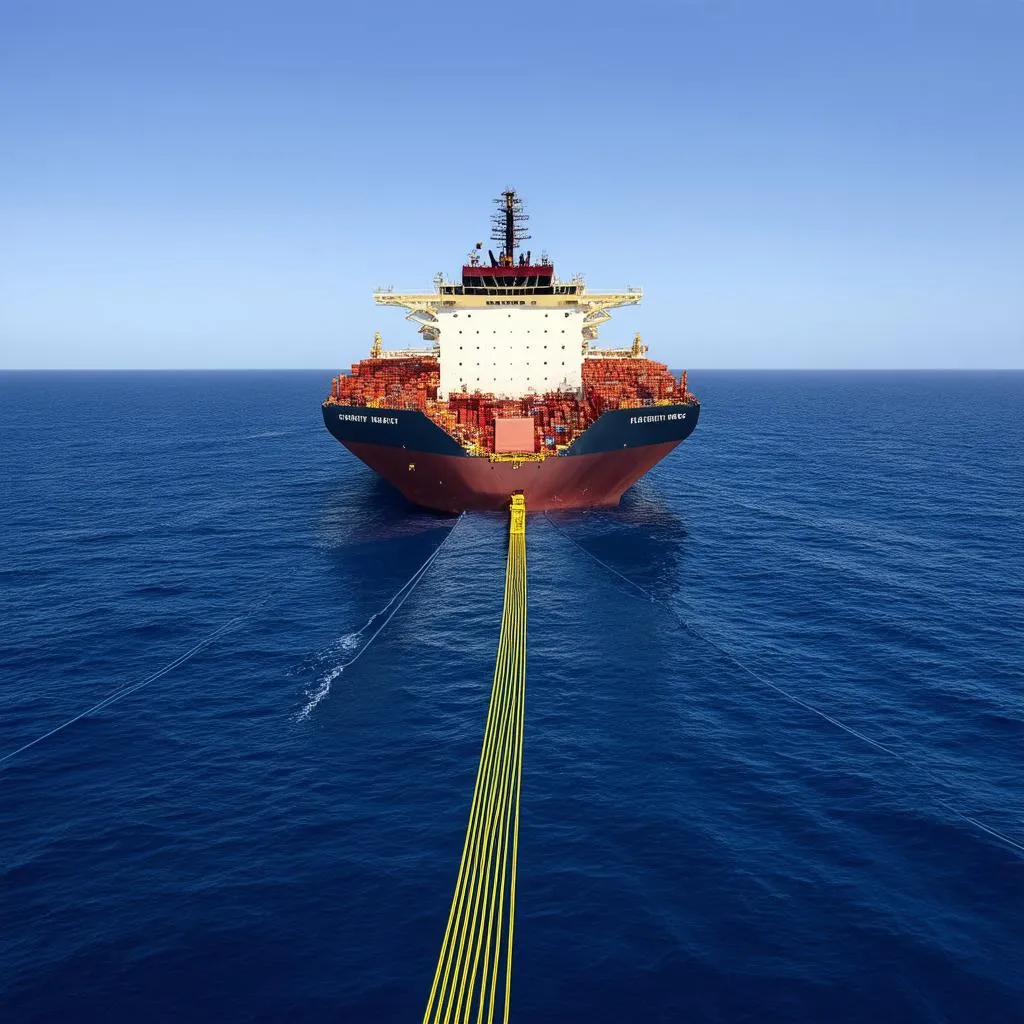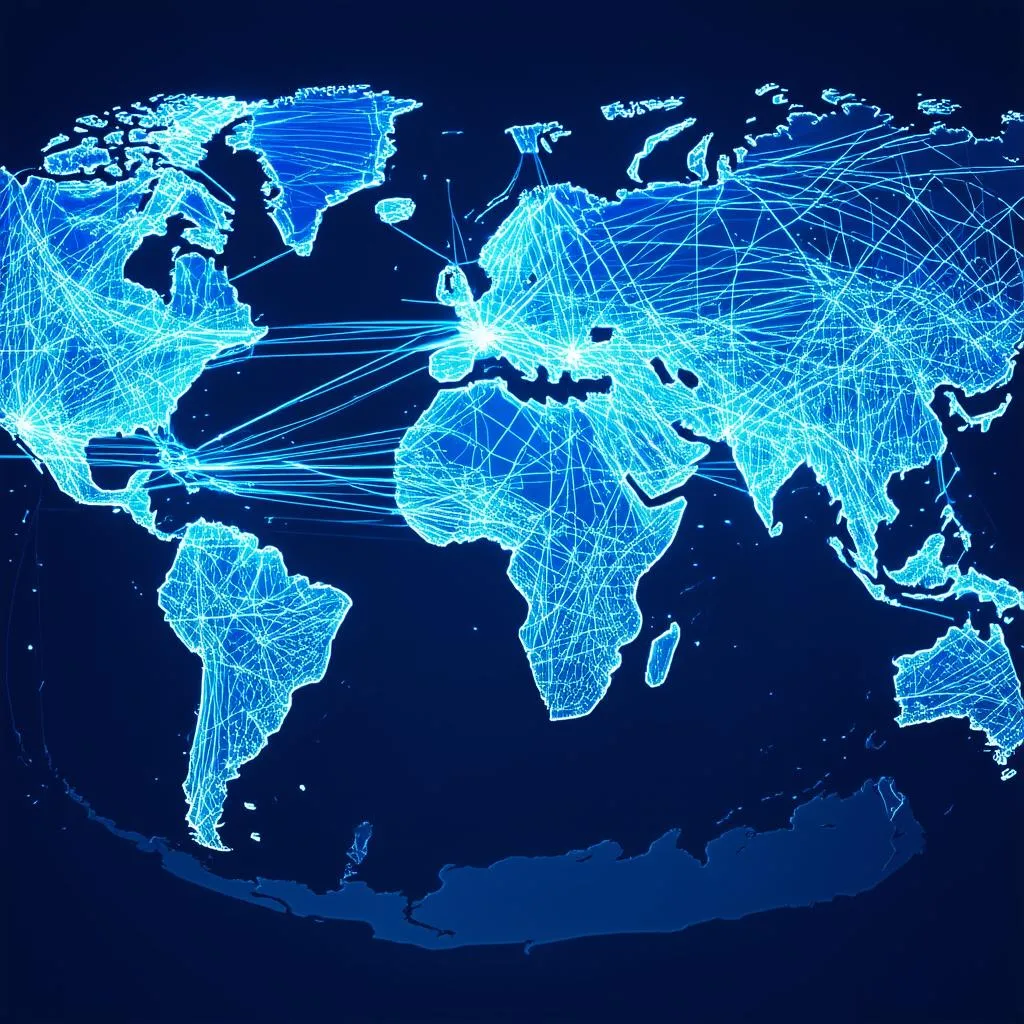Have you ever sent an email to a friend across the globe and wondered, “How did my message travel across the ocean in a blink of an eye?”. It might seem like magic, but it’s actually a marvel of modern engineering! Let’s dive deep into the fascinating world of undersea cables and explore how the internet traverses continents, connecting the world like an intricate digital nervous system.
The Backbone of the Internet: Submarine Cables
The internet, in its essence, is all about data transfer – a constant flow of information zipping around the globe. But how does this data physically get from one continent to another? The answer lies beneath the waves, in the form of submarine communication cables.
These aren’t your ordinary cables. Imagine a garden hose, but instead of water, it carries strands of optical fibers thinner than a human hair. These fibers transmit data as pulses of light at incredibly high speeds. Thousands of miles long, these cables are laid on the ocean floor, connecting continents and carrying the bulk of our internet data, phone calls, and even television signals.
A Journey Through the Deep: How Cables are Laid
Laying these cables is a fascinating feat of engineering. Specialized ships equipped with powerful plows carve a path through the seabed, carefully placing the cable to avoid obstacles like shipwrecks and coral reefs.
Did you know? The first transatlantic telegraph cable, a precursor to today’s internet cables, was laid in 1858! It took 16 years of attempts and innovations to achieve this, marking a pivotal moment in global communication.
Just like planning a road trip, the cable route is carefully mapped out, considering factors like water depth, seismic activity, and even potential fishing zones.
 Submarine Cable Laying
Submarine Cable Laying
From Continents to Your Screen: The Journey of Data
Let’s imagine you’re sending a message from New York City to a friend in London.
- Your Device to the Network: Your message first travels through local networks and Internet Service Providers (ISPs), eventually reaching a landing station – the point where the undersea cable begins.
- Undersea Journey: From the landing station, the data is converted into pulses of light and transmitted through the fiber optic cable. These pulses bounce off the cable’s inner walls, traveling at nearly the speed of light across the Atlantic Ocean.
- Reaching the Destination: The signal reaches a landing station in the UK, where it’s amplified and converted back into an electronic format.
- Delivery to your Friend: The message then travels through local networks and ISPs until it reaches your friend’s device in London.
The Future of Undersea Communication
The demand for faster and more reliable internet is ever-growing. Companies are constantly innovating, developing new cable technologies with higher bandwidth and capacity.
Dr. Alice Chen, a leading researcher in optical communication, states, “We are on the verge of a new era in undersea cable technology. The future holds incredible potential for even faster data transmission, enabling seamless global connectivity.”
 Global Network Connections
Global Network Connections
FAQs: Unraveling Common Questions about Undersea Cables
Q: What happens if a cable gets damaged?
A: Cable repairs are a complex but well-practiced procedure. Specialized ships with robotic arms are deployed to retrieve the damaged section, which is then spliced and repaired.
Q: How deep are these cables laid?
A: The depth varies depending on the ocean floor’s topography. In general, they are laid several thousand feet below sea level, deep enough to avoid fishing nets and most marine traffic.
Q: Are there any environmental concerns with these cables?
A: The environmental impact of laying cables is carefully assessed. Modern cables are designed to be long-lasting and minimize disturbance to the ocean floor.
Embracing the Connected World
The next time you connect with someone across the globe, take a moment to appreciate the marvels of undersea cables. They represent a triumph of human ingenuity, connecting us all in ways we never thought possible.
For more fascinating insights into the world of travel and technology, be sure to explore other articles on TRAVELCAR.edu.vn. Let us know in the comments below what other technological wonders you’d like us to unravel!